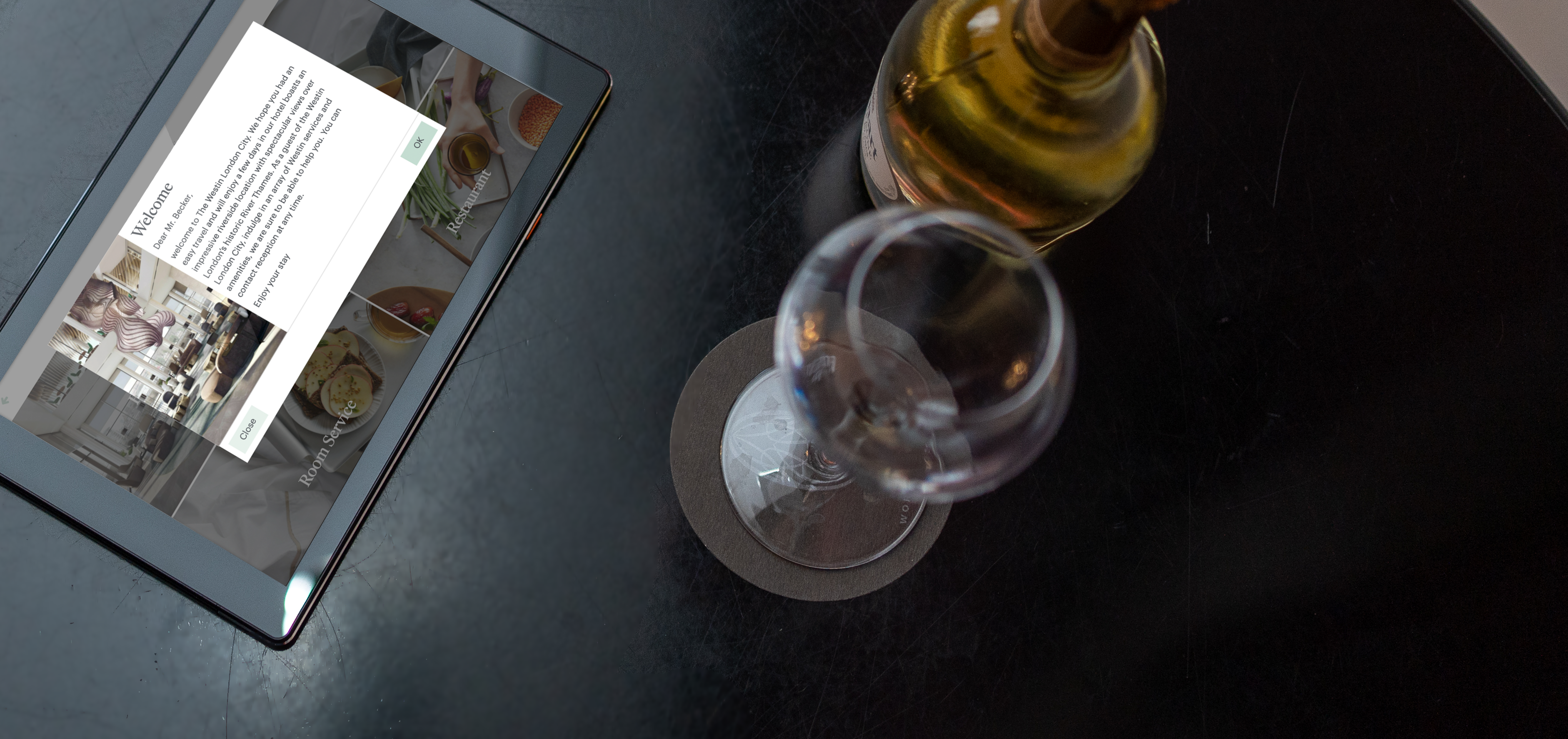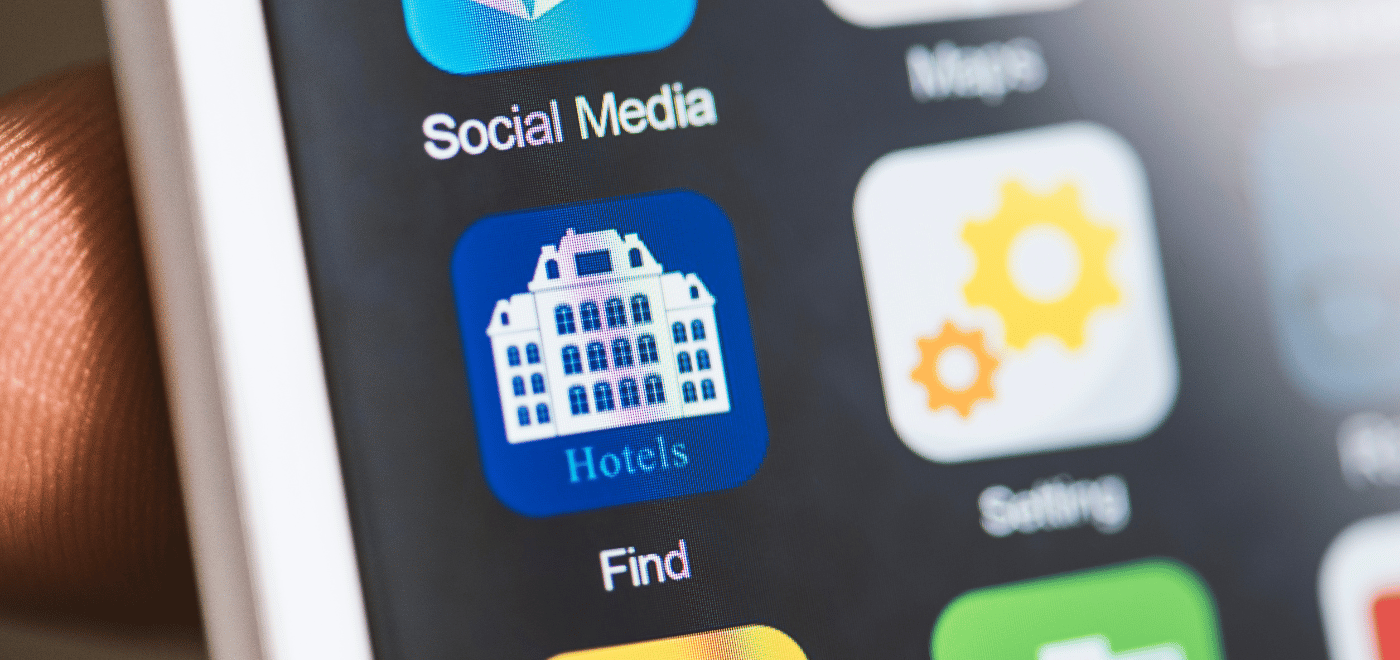![]()
Explore how large-scale hotels and hotel chains can leverage centralized, targeted and data-driven guest message strategies to deliver timely, personalized guest communications.
Reaching out to your guests at the right time while they are at your property is the key to exceptional guest communication. For larger hotel chains looking to offer consistent, personalized experiences across multiple locations, a centralized and automated guest communication solution can make all the difference. This approach helps you connect with guests at the perfect moment, enhancing their experience while simplifying operations and saving time for your team.
One of the most effective ways for large-scale hotels and hotel chains to reach out to their guests is through push notifications on hotel room tablets. These real-time messages provide a direct line to guests, offering hotels a powerful marketing and engagement tool. They are, of course, also available and suitable for smaller properties, but they bring particular benefits for chains and larger hotels.
However, push notifications are a double-edged sword: when done right, they can enhance guest experiences and foster loyalty; when overdone or poorly timed, they risk annoying users and even causing app uninstalls.
In this blog, we’ll explore the essential components of an effective push message strategy for hotels that operate on a large scale and introduce SuitePad’s Guest Push Journey feature to discover how data and hotel tech like hotel room tablets can help you time and craft your push messages better.
1. Segment and Personalize Your Audience
Push messages are most effective when they are relevant and personalized. Large-scale hotels often cater to a more diverse clientele, from business travelers to vacationers. To avoid sending generic messages, segment your audience based on factors like:
- Booking type (business, leisure, group bookings)
- Guest’s location or destination
- Booking window (weekdays vs. weekends)
- Loyalty status (new guest vs. repeat guest)
- Preferences and past behavior (e.g., spa-goers, food enthusiasts)
Once segmented, personalize the content of the push notifications. Use the guest’s name and tailor messages to their preferences or current trip. A personalized message that recommends nearby attractions or suggests room upgrades adds value to the guest's experience.
Data-driven solutions that integrate with your property management system (PMS) make personalization seamless. SuitePad’s Guest Journey Push makes it easy for chain hotels to deliver that level of service at scale. With the ability to send customized messages based on a guest’s stay details, preferences, and even specific moments in their guest journey, this feature ensures that each guest feels valued and understood.
2. Leverage Timing and Frequency
Timing is crucial when it comes to push notifications. Sending the right message at the wrong time can harm the user experience. Consider these strategies for when to send notifications:
- Pre-arrival messages: Remind guests of their upcoming stay, offer check-in instructions, and provide information about the property.
- During stay: Send relevant offers like dining suggestions, spa discounts, or local events, but avoid spamming. Limit messages to one or two a day during the guest’s stay.
- Post-departure: A thank-you message followed by a request for feedback or a review can build brand loyalty.
Moreover, real-time engagement ensures guests receive information when they are most likely to act on it. For instance, a message about breakfast specials delivered early in the morning is more likely to prompt a visit to the hotel restaurant. Guests are also most likely to watch TV and use the tablet as a remote, making it a convenient touchpoint for delivering timely information and offers directly to them.
Keep in mind that properties can be in different time zones. Schedule messages to align with each property's local time to ensure they’re sent at appropriate hours, maximizing engagement.
3. Create a Centralized System for Seamless Operations
.png?width=580&height=387&name=Guest%20Journey%20Push%20(3).png) For hotel chains, managing push notifications across multiple properties can quickly become complex. A centralized system that integrates with the hotel’s property management system (PMS) ensures seamless operations and unified messaging across locations. Such a system allows for better coordination in delivering timely, consistent, and personalized push notifications, regardless of where the guest stays.
For hotel chains, managing push notifications across multiple properties can quickly become complex. A centralized system that integrates with the hotel’s property management system (PMS) ensures seamless operations and unified messaging across locations. Such a system allows for better coordination in delivering timely, consistent, and personalized push notifications, regardless of where the guest stays.
A centralized system helps ensure that data from every location, guest preferences, and behavior can be stored, accessed, and used effectively to create meaningful engagements. This not only enhances operational efficiency but also makes managing large-scale campaigns significantly easier.
With tools like SuitePad’s Guest Journey Push, hotel chains can simplify operations while still delivering personalized messaging at scale. This type of system makes it easy for management to maintain consistency and quality while also catering to the specific needs of guests at each property.
4. Enabling Multilingual Support
Push notifications are a powerful tool for guest engagement, but their effectiveness can be limited if language barriers prevent guests from fully understanding the message. Enabling multilingual support in your push notification strategy is essential for large-scale hotels and chains that cater to international guests. By delivering messages in the guest’s preferred language, hotels can improve communication, personalize the guest experience, and ensure that important information—such as check-in instructions, dining offers, or local recommendations—is clearly understood.
Multilingual support can also help hotels create a more inclusive and welcoming atmosphere for guests from diverse backgrounds. Whether it's sending a pre-arrival message in their native language or providing in-stay notifications about amenities, this strategy shows respect for cultural differences and enhances guest satisfaction. By leveraging data from the hotel’s property management system (PMS) to automatically send messages in the correct language, hotels can ensure seamless communication that improves guest engagement and reduces misunderstandings.
SuitePad’s Guest Journey Push feature supports multilingual messaging, ensuring that guests from various countries can enjoy the same level of personalized communication.
5. Incorporate Feedback Loops
Push notifications are not only useful for delivering offers but also for gathering real-time feedback during a guest’s stay, enabling hotels to identify and resolve issues before they escalate. By using in-stay feedback loops, hotels can ask guests to share their thoughts about the room or services while they are still on the property. This proactive approach allows hotels to address concerns immediately, improving guest satisfaction and avoiding negative reviews. For example, a timely notification asking about room comfort can lead to quick fixes, like providing extra towels or adjusting room settings, ensuring the guest feels valued.
 Tailored feedback requests based on specific points in the guest’s journey—such as after check-in, dining, or near the end of their stay—enable hotels to gather insights at the most relevant times. These insights help management improve staff performance and operations by identifying areas where service can be enhanced.
Tailored feedback requests based on specific points in the guest’s journey—such as after check-in, dining, or near the end of their stay—enable hotels to gather insights at the most relevant times. These insights help management improve staff performance and operations by identifying areas where service can be enhanced.
In addition, post-departure surveys can strengthen guest relationships by requesting detailed feedback and reinforcing the hotel’s commitment to guest care. By continually monitoring feedback, hotels can optimize the guest experience and ensure operational efficiency.
Conclusion
For large-scale hotels and global chains, the challenge is not just in sending messages but in sending the right message at the right time, in the right language. With the help of hotel technology, hoteliers can turn a simple notification into a powerful interaction.
The point we touched on in this blog post is just a starting point to create a long-standing and bulletproof guest experience. Opportunities with guest messaging are endless, and with a touch of creativity, they can be used to connect what your hotel offers to your guests, whether it is your loyalty program or unique offerings.
Stay tuned for part 2 of this blog post for creative and practical examples tailored for hotels!
Published on 11 November 2024


.png?width=100&height=100&name=Bastien%204x4%20(11).png)



